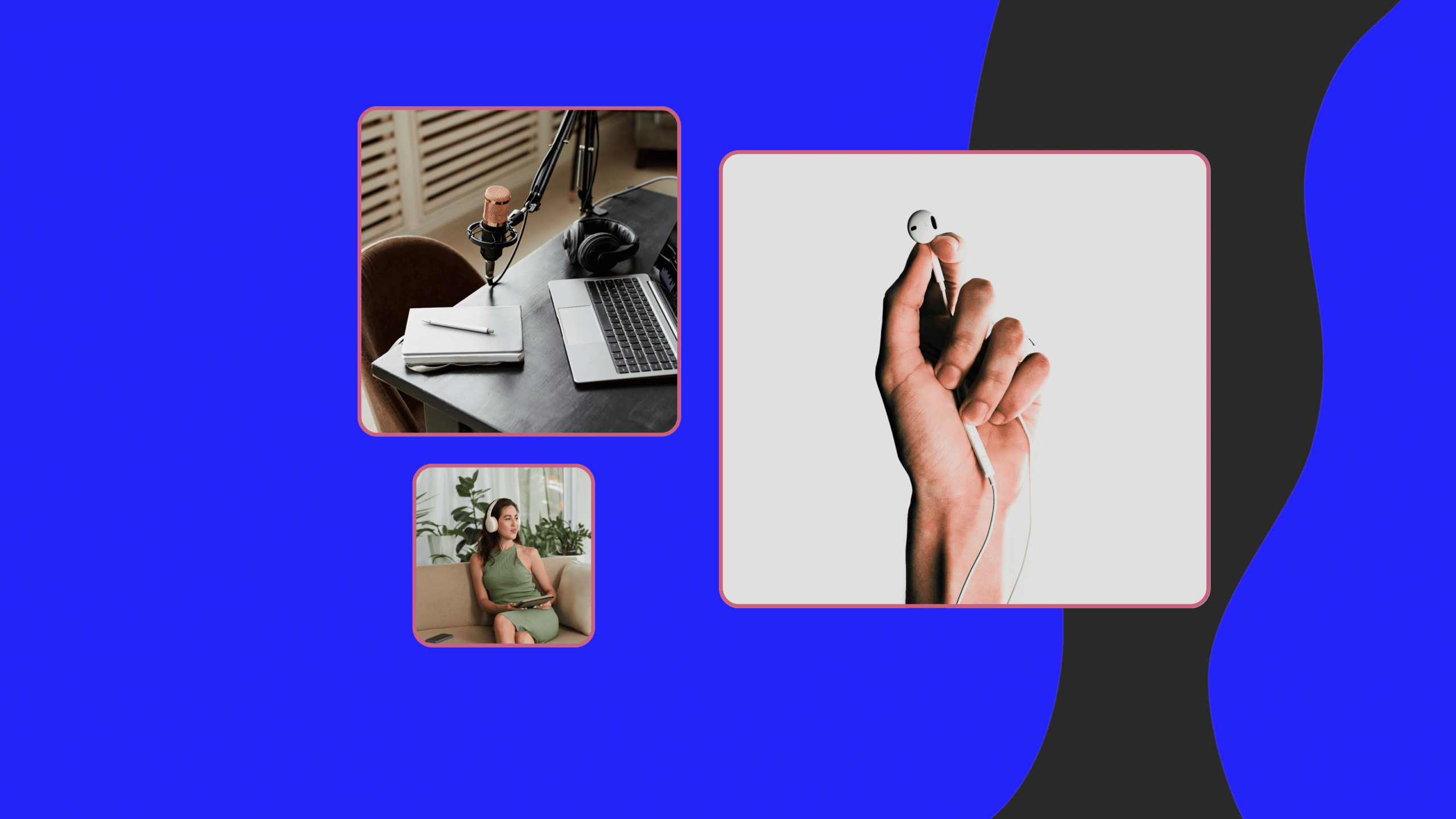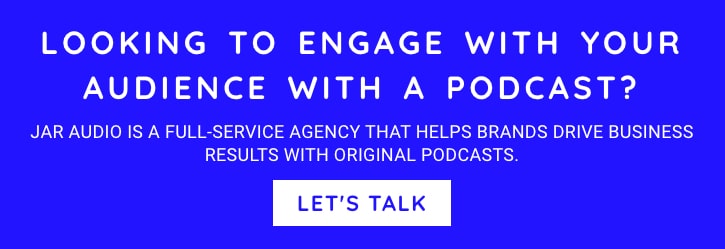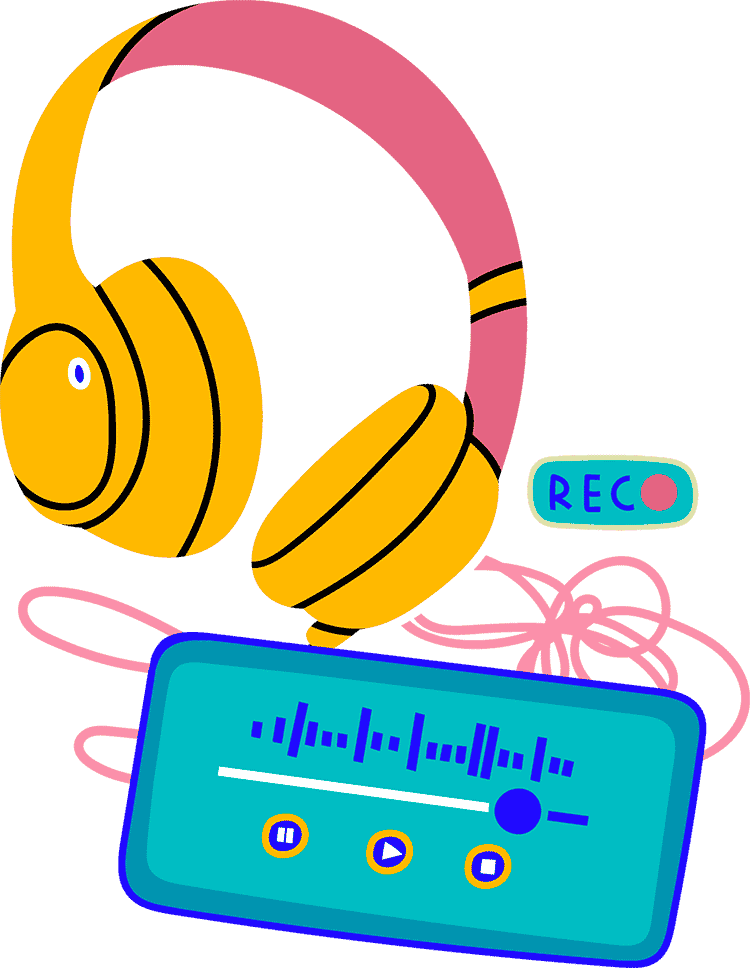I have a theory.
I dream more often about stories I’ve heard than the ones I’ve seen. Not the flashy Netflix thrillers or the prestige dramas — I mean the quiet, gripping episodes of narrative podcasts. I’ll wake up having replayed scenes from This American Life or Heavyweight (and of course… the true crime dramas/horrors) in my dreams, vivid and oddly personal. I don’t have the science to back this up (yet), but I suspect it’s because audio demands more from the imagination. You don’t just absorb it — you construct it. And when you build the story in your own mind, it has a better chance of sticking around in your subconscious, long after you’ve hit pause.
When I first started interning in advertising, I was invited to sit in on my first radio spot recording. I was super green — wide-eyed, notebook in hand, soaking everything in.
Just before we hit record, my first creative director leaned over and said, “Audio is theatre of the mind.”
It’s a total cliché. We’ve heard it a billion times. Yet, it’s completely true. And I think of it daily.
Because without visuals, something remarkable happens in our brain: we start seeing things. Not on a screen — but in our imagination.
And when that experience is well-crafted, it can be just as vivid — if not more so — than any flashy video.
But too many marketers forget this. They treat podcasts like repurposed blog posts or interviews with a theme song slapped on. Talking heads. No tension. No spark.
Let’s fix that.
What are audio storytelling techniques — and why do they matter?
Audio storytelling techniques are narrative tools used to create immersive, emotionally resonant audio content. These include tone, pacing, music, sensory language, silence, and intentional scripted (and unscripted) elements
Used well, they don’t just deliver information like widgets on a conveyor belt. Instead, they create an immersive scene in the listener’s mind that makes the information memorable.
At JAR, we call this approach audio-first storytelling. And it’s the difference between someone hearing your podcast — and someone experiencing it.
Can audio create visual experiences in the brain?
Yes. Studies show that audio can activate the brain’s visual cortex — just like seeing actual images.
A 2006 study published in NeuroImage found that when listeners heard richly descriptive stories, their visual cortex lit up, allowing them to “see” the scene mentally.
This isn’t just some poetic notion — it’s neuroscience.
So when you use audio to set a vivid scene, your audience isn’t listening passively. They’re co-creating an image in their mind. That’s engagement on a different level.
Is video podcasting still valuable?
Absolutely. At JAR, we’re all-in on video podcasts when the story calls for visuals, when clients already have an active YouTube presence, when the target audience is video-obsessed, or when supplementary visuals would support the podcast by expanding reach on YouTube, LinkedIn, or TikTok.
In fact, for many brands, video-first podcasting can be the right strategic move.
When should your podcast be video-first?
Video-first podcasts work best when the value lies in the visual performance, presence, or shareability of the content.
Here’s when video-first makes the most sense:
- Your hosts are charismatic, on-camera storytellers: Facial expressions, gestures, or energy add to the experience. If they’re celebs – even more reason to go video.
- You want to create social clips: Especially for TikTok, Instagram Reels, or YouTube Shorts. Recording in both audio and video gives you maximum flexibility here.
- You have visual assets to showcase: Products, demos, behind-the-scenes footage, etc. can greatly enhance the watchability of your video podcast.
- You’re building personal brands: Founders, execs, or influencers who benefit from being seen.
- You’re aiming to rank on YouTube: YouTube is the world’s second-largest search engine.
For example, if you’re a tech company and your podcast is all about product innovation, filmed conversations in a stylish studio can add credibility and polish. Or if you’re in wellness or fitness, a video podcast lets your audience connect visually with your energy and vibe.
But video-first doesn’t have to mean video-only. Great podcasts are designed for multi-platform impact, which is why we often produce shows that work beautifully in both formats.
When should your podcast be audio-first?
When you want to build a strong bond with your audience, or create a sense of “being there.” Say you’re a travel brand sharing emotional, solitary stories of transformation. Would a talking-head video really capture the feeling of standing alone at a glacier’s edge?
Probably not.
But with audio, you can layer soundscapes — the wind, footsteps, echo, breath — and let the listener feel the environment. You’re not showing them a story. You’re letting them live it.
How does audio increase empathy in storytelling?
Audio storytelling can trigger empathy by activating the same brain regions used for emotional processing and perspective-taking.
One of my favourite examples of this is from Nice Genes!, a podcast we produce for Genome BC. In one episode, host Kaylee Byers takes us deep underwater, where you hear the real sound of a coral reef. It crackles like a bonfire — alive and vibrant.
And then, the sound begins to fade.
As you learn that many coral reefs are dying, it’s not just sad information. It’s grief. You felt the coral all around you, and now you’re losing it.
That’s the power of audio-first storytelling: it creates an emotional bridge. It cultivates empathy through sound.
Want to hear the coral reef moment?
https://youtu.be/IyA5HQQpDYQ?si=Q7huK9bXPsbxpEk0&t=194
The science backs it up. A 2012 Scientific American study found that emotionally engaging audio narratives activate the same neural networks associated with empathy and perspective-taking. When we hear a story — especially without visuals — we don’t just understand someone’s experience, we inhabit it.
We’re seeing this emotional power echoed in some of today’s most popular shows, too.
Take The Retrievals, the hit podcast from Serial and The New York Times. It tells the true story of women who underwent painful fertility treatments, only to discover that their pain meds had been replaced with saline.
It’s horrifying. But it’s the audio design that makes it unforgettable. You hear their voices — controlled, cracking, breathy — with space between the words. Silence that hurts.
No reenactments. No dramatizations. Just raw, human truth.
Listeners felt outrage, grief, empathy — they saw themselves in those waiting rooms, on those cold examination tables – and the show sparked national conversations about how women’s pain is ignored.
That’s the kind of resonance only audio can create.
How does immersive audio storytelling affect memory?
Stories delivered through audio are more memorable because they engage emotion, imagery, and narrative structure.
Psychologist Jerome Bruner found that people are 22 times more likely to remember information when it’s told as a story.
Add in sonic cues — music, silence, tone — and you’re building a memory that lasts far longer than a tagline ever could. Oh, and it just happens to be brought to the listener by your brand. Win/win.
What happens when podcasts lack storytelling?
If your branded podcast is just “talking heads” or casual banter, it risks falling flat. No emotion, no imagery, no retention.
Flat storytelling = flat perception.
And for brands, that means missed opportunity.
That’s not to say there’s no place for light, conversational formats — there absolutely is. But if you’re hoping to make a lasting emotional impact, stand out from the herd, or build brand affinity, you can’t rely on banter alone. The best podcasts — whether chatty or cinematic — are designed with intention.
How can silence improve audio storytelling?
My co-founder Jen Moss likes to say that silence is one of the most underrated audio tools. It creates:
- Tension: Pauses make listeners lean in.
- Intimacy: Quiet moments build emotional weight.
- Reflection: Space lets messages land — and stick.
Silence, like in music, is part of the composition. Without it, your podcast becomes a wall of noise.
How does JAR create cinematic podcast experiences?
At JAR, we don’t just hit record and hope for the best. Technical Director Sam Seguin and his team at JAR design podcasts around their sound palette.
- We start with strategic scripting. Every episode has a narrative arc, emotional turn, and clear tension.
- We edit for rhythm and energy. Every cut serves the story.
- We layer-in custom sound design. City streets, creaking floors, single piano notes — it’s all intentional, and built to serve and support the content, enhance the mood, and uphold the power of each moment.
The result? Immersive audio experiences that fully harness sound’s potential — transporting listeners on vivid, unforgettable journeys of imagination. These shows deliver industry‑leading listen‑through rates and cultivate a growing army of loyal, repeat listeners. Once we’ve demonstrated this level of audio mastery, your audience will carve out time for “appointment listening.”
Final takeaway: Why should marketers care about audio-first storytelling?
Because a podcast that only talks at people might get played once.
But a podcast that triggers emotion, paints scenes, and lives in the imagination?
That gets remembered.
That builds connection.
That shapes how your brand feels to an audience.
Want to create an immersive podcast experience for your brand? Talk to us.
Roger transitioned from a 22 year career in advertising account management to co-founding JAR, a podcast podcast production agency. As CEO of JAR, he propels the company’s growth by prioritizing audience engagement and podcast marketing. Under his guidance, JAR flourishes with a global clientele, aiming to broaden its reach across North America and revolutionize brand connections through immersive storytelling.



